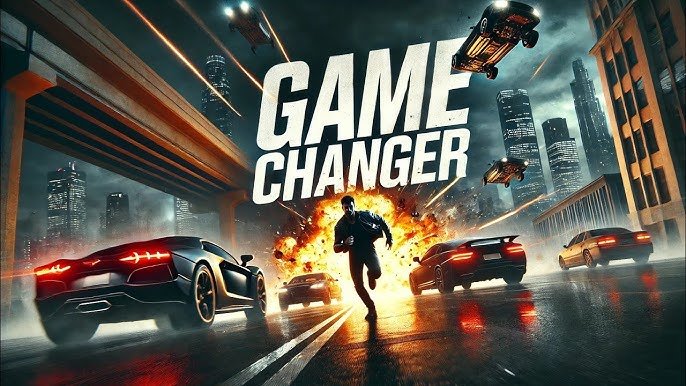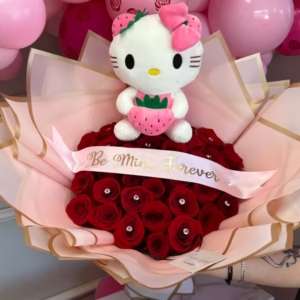It Follows poster : Fear Always One Step Behind
Introduction
It Follows” is a 2014 horror film directed by David Robert Mitchell that quickly gained recognition for its unique premise and unsettling atmosphere. The film’s success wasn’t just due to its chilling narrative or tension-filled scenes but also its masterfully crafted marketing campaign, with one of its standout features being its poster. The “It Follows” poster has become an iconic symbol of the film’s eerie tone, minimalist yet terrifying imagery, and the potent sense of dread that defines it. In this article, we will analyze the poster in-depth, exploring its visual elements, symbolism, and how it communicates the film’s essence. We’ll also discuss its impact on the movie’s marketing and its role within the broader context of horror film posters.
The Role of Posters in Horror Cinema
Before diving into the specifics of the It Follows poster it’s essential to understand the role of posters in horror cinema. Posters are an integral part of a film’s marketing strategy. In a single image, they must convey the mood, theme, and potential excitement of a movie, often enticing the audience before they’ve seen a trailer or read reviews. In horror, posters often tap into the primal fears of the viewer through disturbing or cryptic visuals.
A successful horror poster needs to be more than just visually striking—it has to evoke an emotional reaction. Fear, anxiety, and curiosity should be stirred up in the viewer just by looking at the poster, leaving them with an insatiable need to understand the horror that the movie promises to deliver.
Horror film posters often utilize visual motifs like dark tones, isolated figures, shadows, and abstract representations of fear. But sometimes, they subvert these tropes in favor of something minimalist, making the familiar even more frightening. It’s within this framework that the “It Follows” poster shines, using simplicity to convey complex horror themes.
Overview of “It Follows”
“It Follows” is a supernatural horror film that revolves around a young woman named Jay (played by Maika Monroe) who becomes the target of a mysterious entity after a sexual encounter. The entity takes the form of a person—often someone Jay knows—and slowly but relentlessly pursues her. The only way to transfer the curse is by having sex with someone else, which passes the burden onto them, but if the new target dies, the curse returns to the original person.
What makes the film so effective is its pacing and its refusal to explain the origins or nature of the entity. This sense of ambiguity amplifies the dread, as does the fact that the entity’s slow pace gives a deceptive feeling of safety, which is quickly shattered when the monster draws closer. The film uses wide shots, sparse music, and quiet suburban settings to create an unsettling contrast between normalcy and horror.
The “It Follows” Poster: Visual Analysis
At first glance, the “It Follows” poster is deceptively simple. It features a single, central image: Jay, sitting in a car at night, with an ominous expression on her face. The background is dark, almost fading into complete blackness, with only the faint glow of the car’s interior lights illuminating her face. Above the image, in bold, minimalist font, the title “It Follows” looms large.
Minimalist Color Palette
The color palette of the poster plays a crucial role in evoking its unsettling atmosphere. Dominated by dark tones, the image uses primarily blacks, grays, and muted blues to create a sense of isolation and danger. The darkness surrounding the car adds a claustrophobic feeling, as though the world outside is hostile and unknown. The lack of bright colors, other than the soft, eerie glow of the car lights, keeps the focus entirely on Jay, and it communicates the feeling that something is lurking just outside the frame—something that the audience can’t see but feels.
This restrained use of color contrasts sharply with more traditional horror posters that rely on blood reds, neon greens, or other dramatic hues to heighten the sense of terror. By opting for a minimalist, subdued approach, the “It Follows” poster subtly suggests that the horror is more psychological and atmospheric than visceral.
Composition and Focus on the Protagonist
The composition of the poster is also vital in setting the tone. Jay is seated in the center of the frame, looking to her right, as if anticipating something approaching from the side. Her expression is one of quiet dread and vulnerability. The fact that she is in a car—a traditionally safe, enclosed space—adds to the sense of unease, as we know that in this film, no place is truly safe from the pursuing entity.
The car is a symbol of freedom and escape in most contexts, but here it serves to trap the character, emphasizing the inevitability of the danger she faces. The lack of any visible threat on the poster forces the viewer to imagine what might be approaching from the darkness, playing on the fear of the unseen and unknown.
The choice to focus entirely on the protagonist also helps establish an emotional connection between the viewer and the character. Unlike posters that feature the monster or the antagonist prominently, “It Follows” prioritizes the human element, signaling to the audience that the true horror lies not just in the creature, but in what the characters are forced to endure.
Title Font and Placement
The typography of the title “It Follows” is stark and simple, using a clean, sans-serif font that feels almost cold and detached. The title’s placement at the top of the poster, directly above Jay, gives the impression that whatever “follows” is an ever-present, looming threat. The choice of font reflects the film’s modern, stripped-down approach to horror, avoiding any ornamental or gothic styles often associated with the genre. This modern, clean design speaks to the film’s broader theme of horror lurking in the ordinary and mundane.
The title itself, “It Follows,” is an integral part of the poster’s impact. The simplicity of the phrase invites immediate curiosity and dread. What is “it”? Why does it follow? These questions resonate with the viewer, sparking intrigue even before they know anything about the film’s plot. The title’s ambiguity, combined with the isolated image of Jay, creates a sense of unease and mystery, perfectly encapsulating the film’s core premise.
The Use of Light and Shadow
One of the most striking aspects of the poster is the use of light and shadow. The car’s interior lights provide the only source of illumination, casting Jay in a soft, almost ethereal glow, while the darkness outside the car feels overwhelming and impenetrable. This juxtaposition of light and dark mirrors the film’s tension between moments of safety and the relentless threat of danger.
The light highlights Jay’s face and upper body, drawing attention to her vulnerability and fear, while the surrounding darkness suggests the omnipresent danger that the audience knows is coming but cannot see. The shadows outside the car are oppressive, almost swallowing the character, which mirrors the film’s theme of an inescapable, slow-moving terror.
Symbolism and Themes in the Poster
The poster’s symbolism ties directly into the central themes of “It Follows.” The car, as mentioned earlier, represents a false sense of security. Cars are typically symbols of control and autonomy—vehicles that allow individuals to escape or move freely. However, in “It Follows,” the car becomes another confined space where the character is trapped, unable to outrun the supernatural force pursuing her.
Jay’s expression and posture in the poster speak to the film’s focus on anxiety and the loss of agency. Throughout the movie, Jay is forced into a situation where she is constantly being pursued, her every movement dictated by the need to escape the unseen threat. The poster captures this perfectly, with Jay’s fearful glance to the side suggesting that she knows something is coming but is powerless to stop it.
The poster also hints at the sexual underpinnings of the film’s plot. While it doesn’t explicitly reference the curse’s transmission through sexual contact, the isolation of Jay in the car, along with her fearful expression, implies that something deeply personal and intimate has gone wrong. The poster conveys a sense of invasion—not just physical but psychological, hinting at the film’s exploration of guilt, shame, and fear related to sexual relationships.
The Poster’s Impact on the Marketing of “It Follows”
The It Follows poster played a significant role in the marketing campaign for the film. Its minimalist design stood out among the sea of more traditional horror posters that often featured grotesque monsters or violent imagery. This differentiation helped to establish “It Follows” as a unique entry in the horror genre, one that prioritized atmosphere, tension, and psychological fear over jump scares and gore.
The poster’s cryptic nature also generated curiosity. Because it avoided giving away too much about the film’s plot or the nature of the threat, audiences were intrigued and drawn in by the mystery. In an era where movie trailers often spoil key plot points, the “It Follows” poster embraced ambiguity, allowing word-of-mouth and critical buzz to build around the film’s unique concept.
Moreover, the poster’s visual style reflected the film’s indie roots, signaling to potential viewers that this was a different kind of horror film—one that blended classic genre tropes with modern sensibilities. Its restrained use of color, typography, and composition suggested a more art-house approach to horror, which helped attract a diverse audience, including those who might not typically gravitate toward the genre.
Conclusion: The Lasting Legacy of the “It Follows” Poster
In the years since its release, “It Follows” has become a modern horror classic, and its poster remains an enduring symbol of the film’s eerie atmosphere and innovative approach to fear. The poster’s minimalist design, symbolic imagery, and focus on psychological dread make it a masterclass in effective horror marketing. It not only captures the essence of the film but also stands as a striking piece of visual art in its own right.














Post Comment